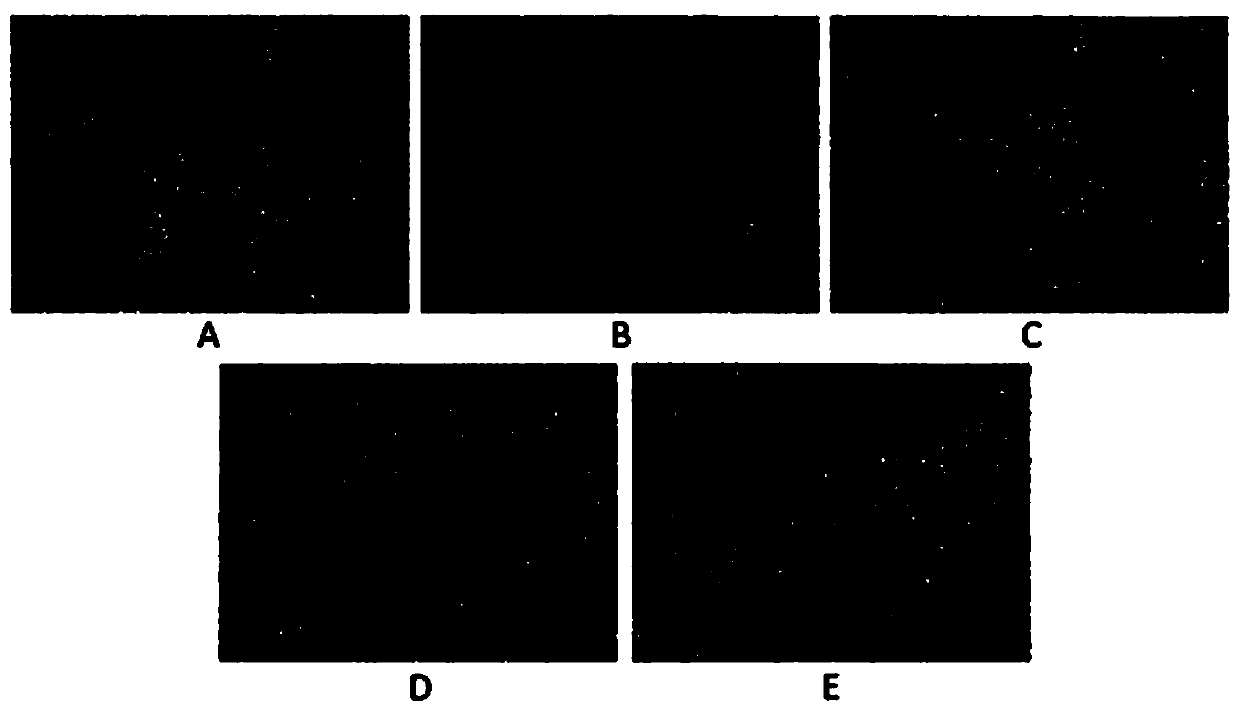New application of astragalus polysaccharide in chromosome protection
A technology of astragalus polysaccharides and chromosomes, applied in the field of biomedicine, can solve the problems of unreported formaldehyde toxicity protection effect and the like
- Summary
- Abstract
- Description
- Claims
- Application Information
AI Technical Summary
Problems solved by technology
Method used
Image
Examples
Embodiment 1
[0021] Embodiment 1: cell culture and grouping
[0022] 1) Preparation of formaldehyde exposure solution: According to the content (M / V) of formaldehyde is 37%, relative molecular weight is 30.03, so 0.1194mL of 37% formaldehyde is added to 99.8804mL of BM-MSCs special medium to obtain 100mL Formaldehyde with a concentration of 16mmol / L was sterilized by suction filtration with a 0.22μm filter membrane, aliquoted, and stored at 4°C. Dilute to 120μmol / L working solution concentration when used.
[0023] 2) Preparation of astragalus polysaccharide solution: take 20 mg of astragalus polysaccharide powder (purity ≥ 98%), dissolve it in 10 mL of DMEM / F12 medium, filter through a 0.22 μm microporous filter to make the final concentration of astragalus polysaccharide to 2 mg / mL, and store at 4°C , diluted with time.
[0024] Human BM-MSCs use complete medium for human BM-MSCs, placed in 5% CO 2 , 37°C, and a saturated humidity incubator. The medium was changed every 2-3 days, and...
Embodiment 2
[0025] Embodiment 2: Observation of cell morphology
[0026] Observe human BM-MSCs under a phase-contrast inverted microscope, take pictures with a microscopic imaging system, and record the results.
[0027] Such as figure 1 As shown, the BM-MSCs in the blank group grew adherently, showing a long fusiform or star shape, relatively uniform in size, and arranged tightly in a spiral shape. In the formaldehyde group, the number of cells decreased, some cells were suspended, the volume was reduced and the size was different, and they were round or even irregular. APS 0.4, 1.0, 4.0 mg·mL -1 In the formaldehyde group, the shape of the cells was significantly restored. Compared with the formaldehyde group, the number of cells increased significantly, and a small number of cells were suspended and round. -1 The APS group was the most obvious.
Embodiment 3
[0028] Embodiment 3: micronucleus test detects the formation of micronuclei
[0029] Trypsinize, collect cells, hypotonic with KCl solution for 3min, fix, drop slices, and Giemsa staining. 1000 cells were randomly observed on each slide, most of the micronuclei contained in the cells were round, with smooth and tidy edges, 1 / 16-1 / 3 of the diameter of the main nucleus, non-refractive, not connected with the main nucleus, and chromophilic The sex is consistent with the nucleoplasm, which is purple or blue-purple, and one or more micronuclei can appear in a cell. The number of cells with micronuclei was counted, and the rate of micronucleated cells (‰)=the total number of cells with micronuclei / total number of observed cells×1000‰.
[0030] The results of micronucleus experiments showed that ( figure 2, Table 1), the micronucleus rate of BM-MSCs formed by formaldehyde was significantly higher than that of the blank group (P-1 After the action, the rate of micronuclei was signi...
PUM
 Login to View More
Login to View More Abstract
Description
Claims
Application Information
 Login to View More
Login to View More - R&D Engineer
- R&D Manager
- IP Professional
- Industry Leading Data Capabilities
- Powerful AI technology
- Patent DNA Extraction
Browse by: Latest US Patents, China's latest patents, Technical Efficacy Thesaurus, Application Domain, Technology Topic, Popular Technical Reports.
© 2024 PatSnap. All rights reserved.Legal|Privacy policy|Modern Slavery Act Transparency Statement|Sitemap|About US| Contact US: help@patsnap.com










